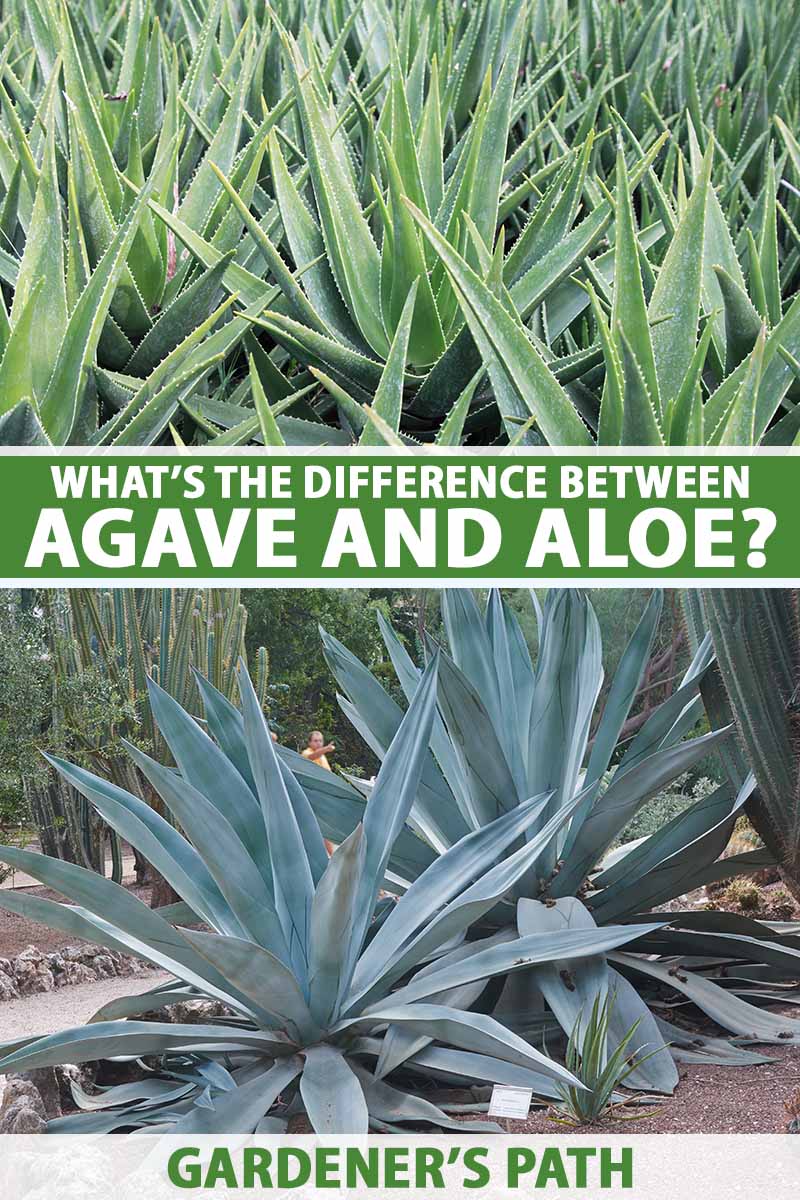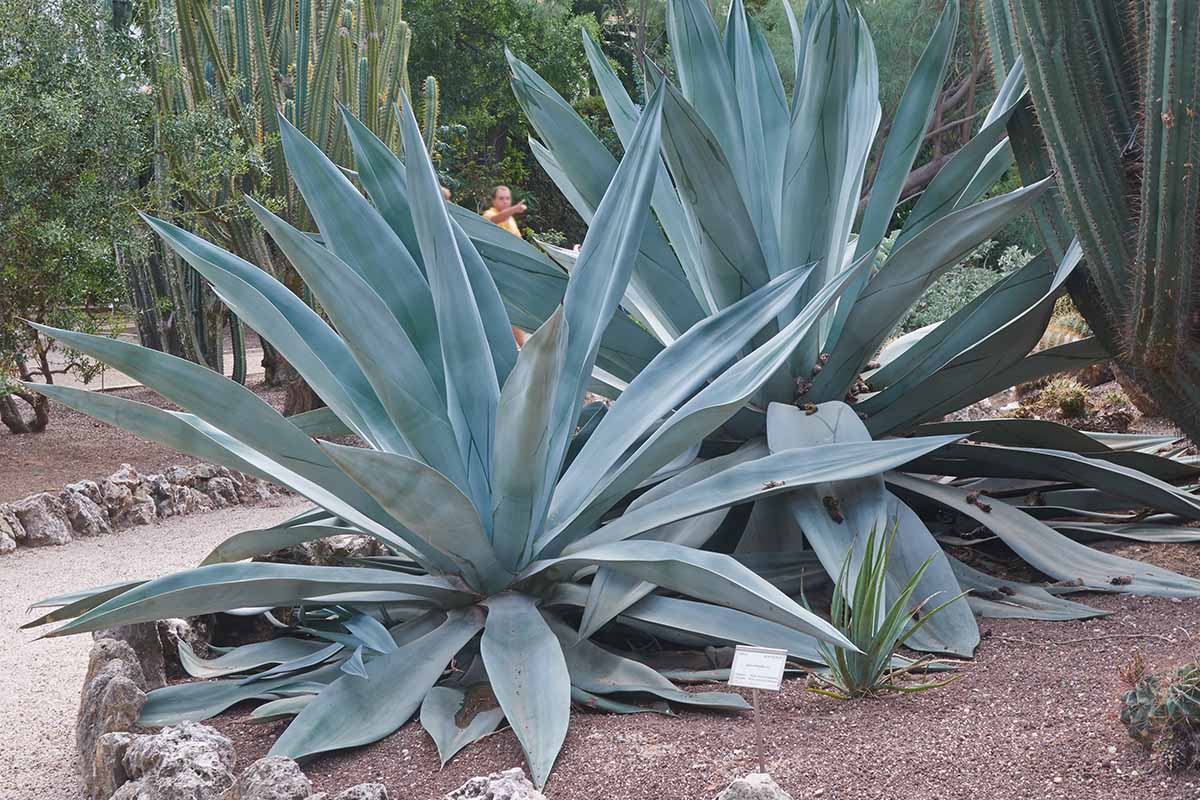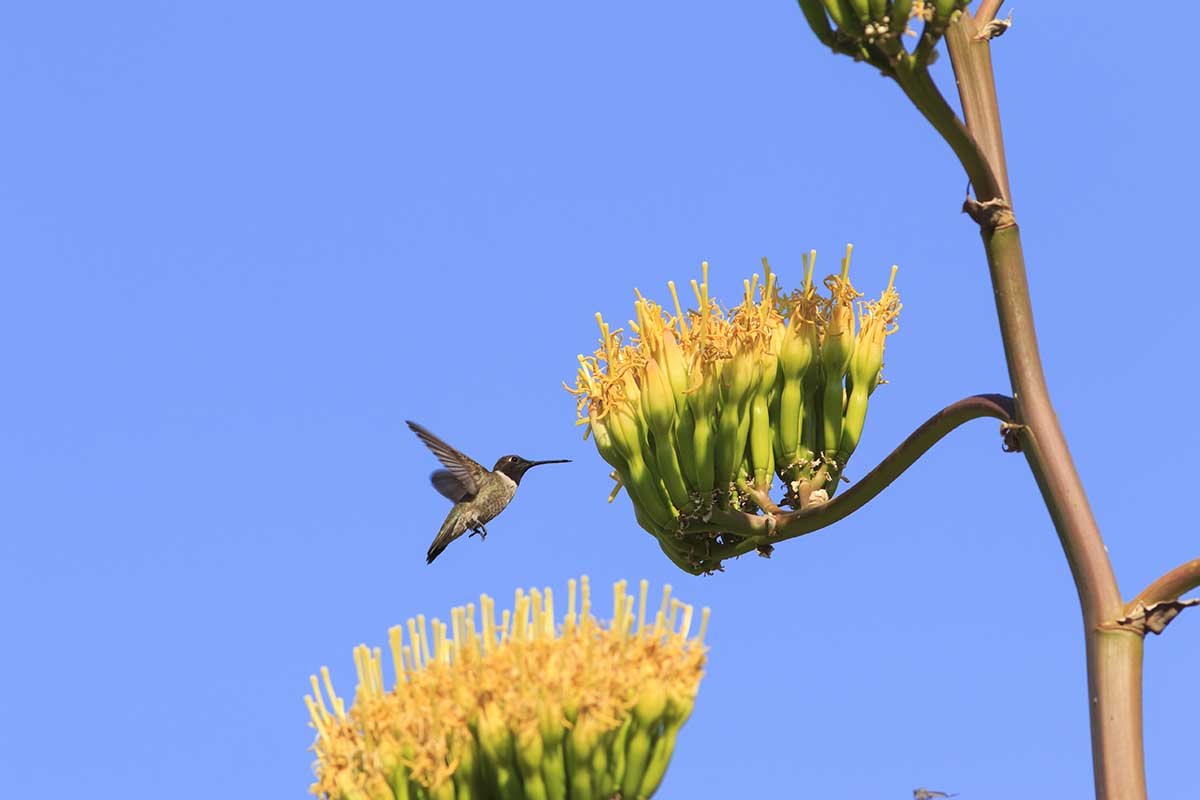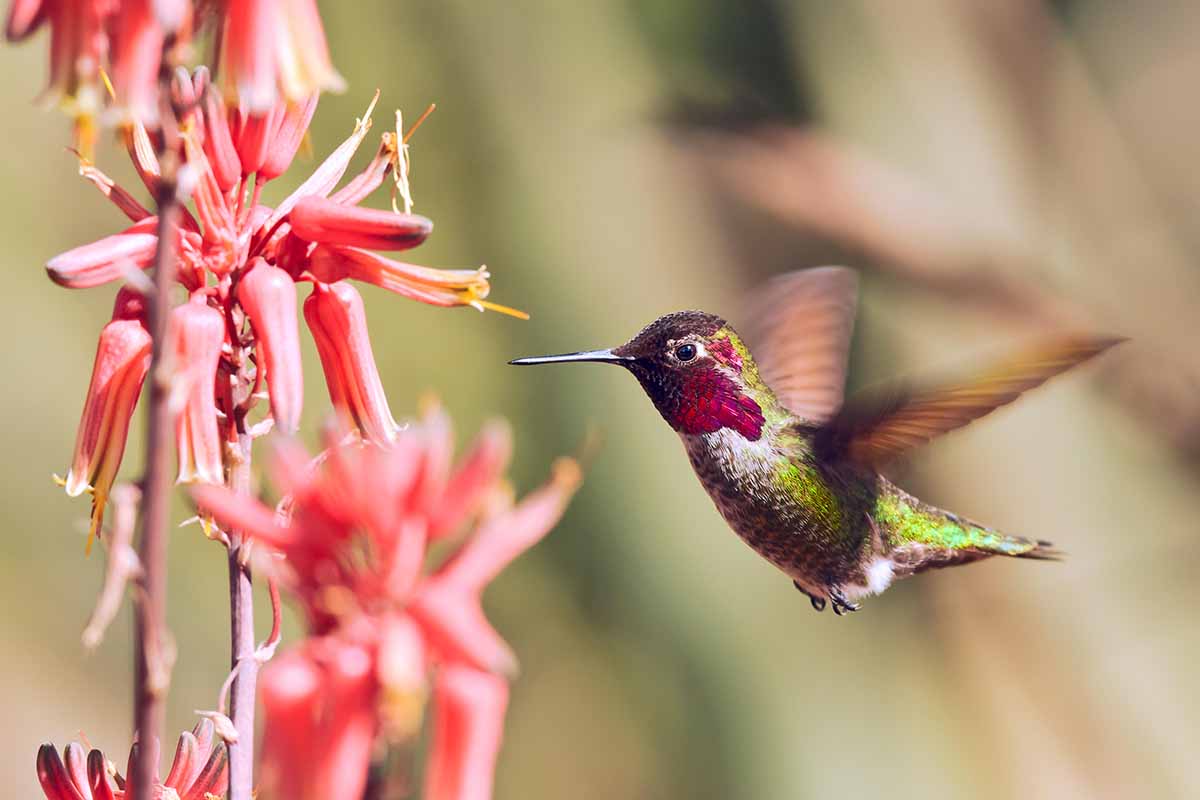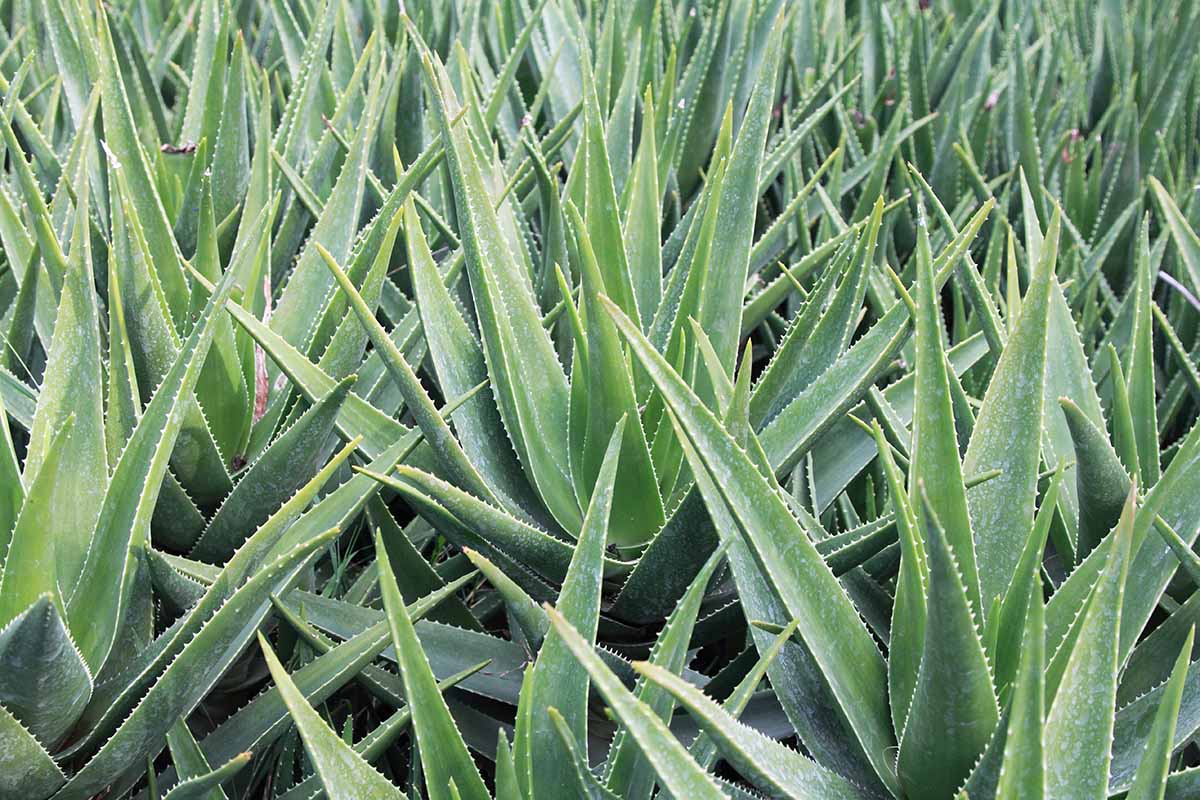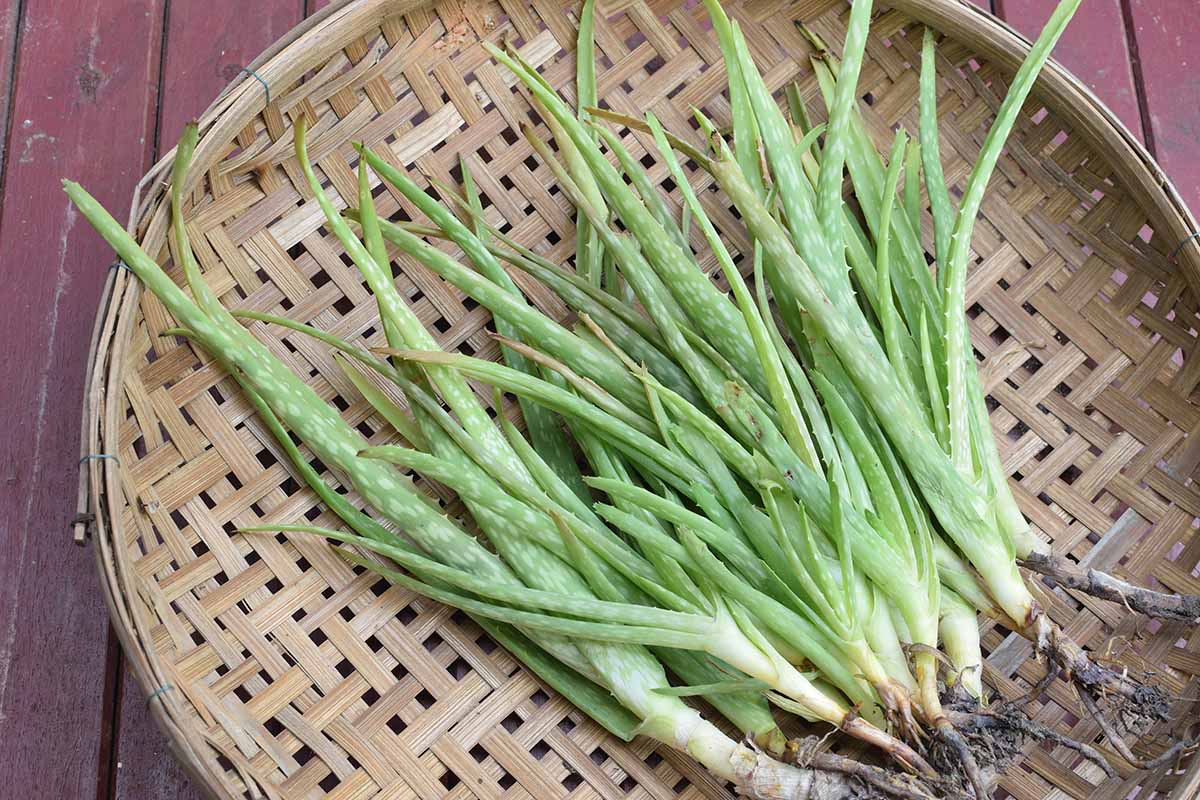They come from two different plant families, but they both belong to the same order, Asparagales, which comprises families with similar traits. We link to vendors to help you find relevant products. If you buy from one of our links, we may earn a commission. But this is a huge group! And it includes many types of succulents as well as alliums like onions and garlic, and various popular garden flowers like gladiolus and daylilies. Both aloe and agave enjoy hot and dry climates, making them ideal selections for xeriscaping and drought-tolerant gardens. The flowers that shoot up from their rosettes are adored by pollinators, and filled with nectar. Grown together, these plants create attention-grabbing water-wise garden scenes. But do they perhaps seem a little… too similar to you? After reading this guide, you will be able to distinguish these two succulents from each other. To get us started, I’ll highlight each plant and its differences, followed by the best ways to use them. Here’s everything that’s up ahead:
Identifying Agave
The Agave genus includes roughly 250 species. Several species are cultivated for fiber, food, or making tequila and mezcal, as well as for use as ornamentals. Commonly grown agave species include A. americana, A. attenuata, and A. tequilana. Agaves are short-stemmed succulent plants that form rosettes. Their tough, fleshy leaves come in a range of colors including green, blue, and shades of silver. Some are variegated with cream and light yellow hues. Agave’s spine-tipped foliage can reach over eight feet in length, depending on the species, and most have sharp-toothed margins. But the leaves and flowers do not look the same in all species of agave. For example, one commonly grown species, A. attenuata or the foxtail agave, has leaves with no teeth or terminal spines, and is less rigid than most types. In addition, A. attenuata produces a curved inflorescence shaped like a swan’s neck, which is not typical of other species. As mentioned, there are many species in this genus and they vary in size. Depending on the variety, some can grow up to 20 feet tall and 10 feet wide, but others are much smaller. Agave utahensis var. nevadensis is one of the smallest species, a slow grower that reaches about 11 inches in height and width at maturity in ideal conditions. Agave flowers only once before they dying, but they also produce offsets around them which will live on and take over the space. Flowers blossom in spring and summer at the end of a tall stalk that shoots up from the rosette, and each flower is about three to four inches long. They bloom in panicles at the end of individual branches and their colors range from cream to yellow or a greenish shade. Learn more about these stunning succulents and how to grow and care for them in our guide.
Identifying Aloe
If you thought the Agave genus contained a lot of species, have you met aloe? Time to get better acquainted. This genus beats them by at least double, with close to 600 species in a range of shapes and sizes. Most aloe plants have thick fleshy leaves filled with a gel-like substance. But the most popular species favored for the copious gel it produces, for use in treating sunburns and for other medicinal purposes, is aloe vera. You can learn more about these plants in our aloe vera growing guide. The list of commonly grown aloes is long, and much like agave, their variety provides a broad palette of architectural options for landscape design. When many people think of aloe, the plant that they envision probably has green leaves. And they wouldn’t be wrong! However, this isn’t true for all types. Species like A. cameronii have reddish-colored leaves, for example. Depending on the variety, the leaves might also feature different patterns. Most of them having teeth along their edges, and the leaves form either a rosette or fan pattern. Aloes range in size. Some are even called trees! One of the largest species, Aloe barberae, which was recently reclassified as Aloidendron barberae, is commonly known as the tree aloe. It can grow up to 60 feet in height with stems as thick as three feet in diameter. Unlike agaves, aloe plants typically flower once a year in spring or summer when grown in ideal conditions, like full sun. The cone-shaped inflorescence shoots up from the middle of the plant, and the flowers tend to be yellow, orange, or red.
Notable Differences Between These Plants
Now, let’s cover the key differences that will help you tell agave and aloe apart from each other. Usually, agave is larger than aloe, although this is not the case in some instances. Agave plants typically live longer than aloe and flower only once, while aloes can flower annually. The inside of aloe leaves is gel-like, while agave leaves are fibrous. They both typically have toothed leaves, but the foliage of agave is more pointy and sharper than aloe.
Best Uses
Both of these types of succulents provide drought-tolerant landscape design options with a multitude of species and cultivars available for planting! If you’re craving some garden design inspiration to place on your coffee table or add to your bookshelf, “Planting Designs for Cactus and Succulents” by Sharon Asakawa is a wonderful option. The book highlights how to best group succulents together so they can thrive while creating gorgeous displays of succulent arrangements. Planting Designs for Cactus and Succulents Aside from both serving as stunning ornamental plants that are water-wise, species with high market value exist from both genera with various applications in food and medicine. The famous aloe vera was listed as one of the top 25 herbal supplements sold in the US in 2019 in HerbalGram, a publication of the American Botanical Council. So, it’s safe to say that people enjoy using this aloe species for the multitude of healing benefits it can offer! Mexico’s traditional spirits, tequila and mezcal, are made from the agave plant. While mezcal can be made from various agave species, tequila is expertly crafted from A. tequilana, commonly known as blue agave.
Serious about Succulents
Many novice gardeners begin with succulents, thanks to the resilience of these plants and their undemanding care requirements. They’re an excellent water-wise alternative to lawns in regions where they may be grown year-round. Agave and aloe make a fantastic pair to consider adding to your drought-tolerant garden. And being able to tell them apart will take you far when you’re choosing which ones to plant! Find the species that will suit your garden best, based on their color, height, spread, and other features and growing requirements. And don’t forget – some can even be grown in containers. For gardeners in cooler zones, a potted aloe plant may be the way to go. And it makes a useful addition to one’s kitchen garden or herbal apothecary. Serious about starting that succulent garden? Let us know what you are planting in the comments section below! And to get you growing, check out these cacti and succulent articles next for more guidance and inspiration:
How to Grow Succulents Outdoors in the Garden35 of the Best Hanging and Trailing Succulents and Cacti11 Easy-Care Exotic Succulents to Grow at Home
